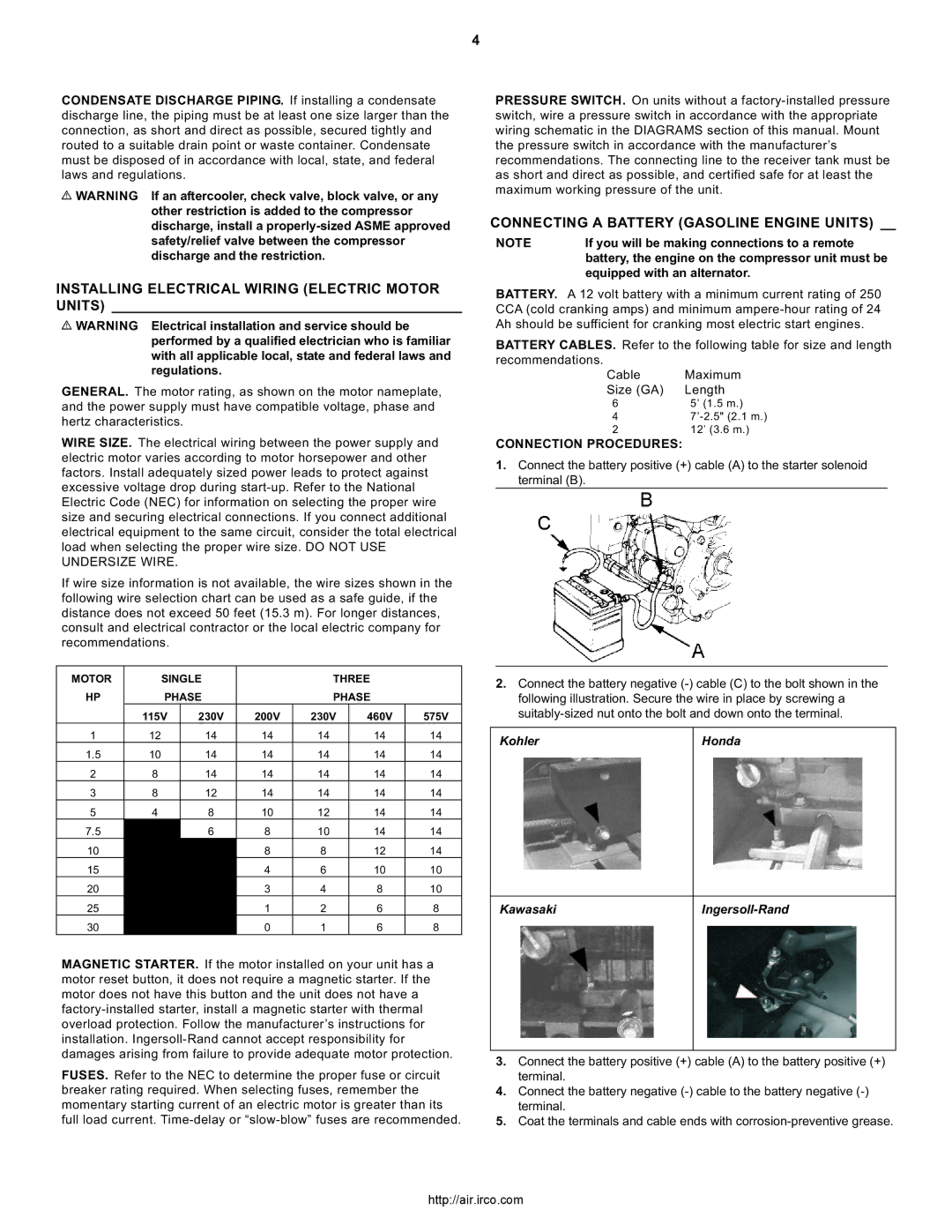7100, 2475, 2340, 3000, 2545 specifications
Ingersoll-Rand is a recognized leader in the field of industrial tools and compressed air solutions, and among their notable product offerings are the air compressor models: 15T, 2545, 3000, 2340, and 2475. These models are engineered to meet various industrial needs, providing reliable performance with enhanced efficiency and durability.The Ingersoll-Rand 15T is a compact yet powerful rotary screw air compressor designed for small- to medium-sized operations. It features a robust build along with a user-friendly interface, allowing operators to easily adjust settings. Known for its low noise levels and energy efficiency, the 15T is ideal for applications requiring consistent air supply in a quiet environment.
The 2545 model is a workhorse in the family, recognized for its high output and extensive capabilities. It leverages advanced rotary screw technology, which provides continuous air flow while minimizing energy consumption. With its high-efficiency air end, the 2545 significantly reduces operating costs, making it suitable for heavy-duty tasks in demanding environments.
The Ingersoll-Rand 3000 is a portable solution that combines mobility with powerful performance. Featuring a rugged design, the 3000 is well-suited for construction sites and outdoor applications. It comes equipped with a reliable cooling system, enabling it to operate effectively in varying temperatures. Its compact design allows it to fit easily in tight spaces while providing ample air power.
The 2340 model emphasizes versatility and reliability, often used in automotive, manufacturing, and energy industries. It offers advanced features such as built-in control systems and service indicators, making maintenance simpler. This model is highly regarded for its reliability, which minimizes downtime and maximizes productivity.
Lastly, the Ingersoll-Rand 2475 is a robust compressor characterized by high flow rates and exceptional durability. It is engineered for large-scale applications, supporting heavy machinery and pneumatic tools. It incorporates sophisticated technology that ensures low noise emissions and energy-efficient operation, catering to workplaces that prioritize eco-friendliness.
Incorporating features like variable-speed drives, advanced cooling systems, and comprehensive monitoring technology, all these models exemplify the commitment of Ingersoll-Rand to innovation and user-centric designs. Whether for small workshops or large industrial operations, these compressors deliver unmatched performance and reliability, making them essential tools in various applications. Their consistent engineering excellence ensures that users can depend on Ingersoll-Rand products for their compressed air needs.

